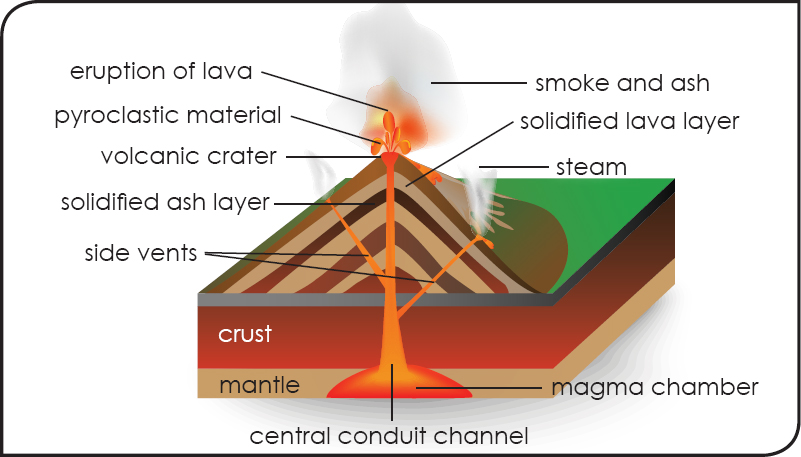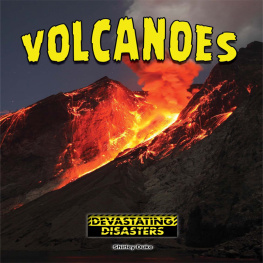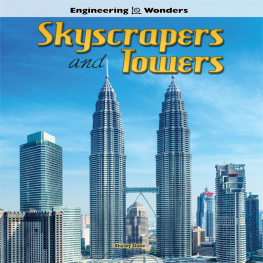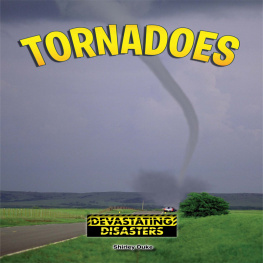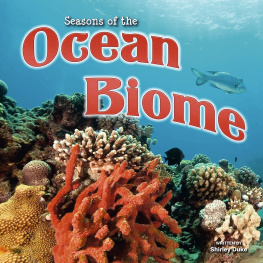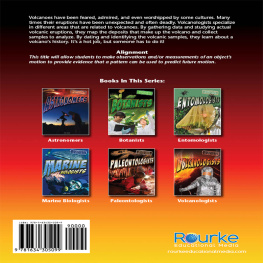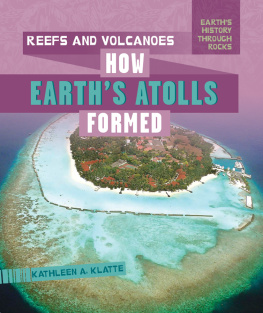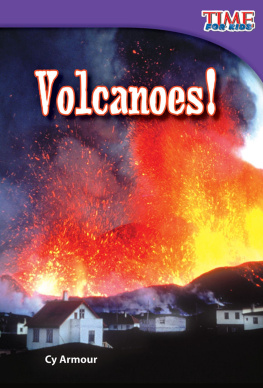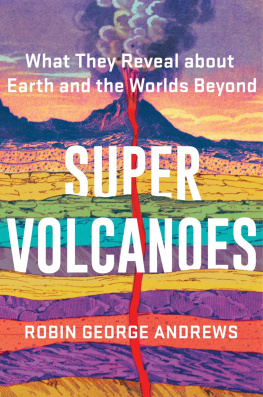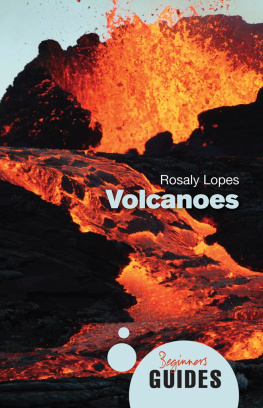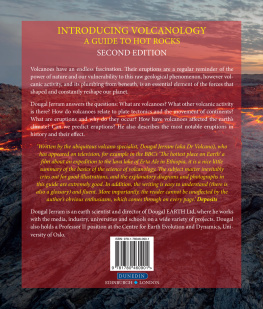Table of Contents
Guide
VOLCANOES
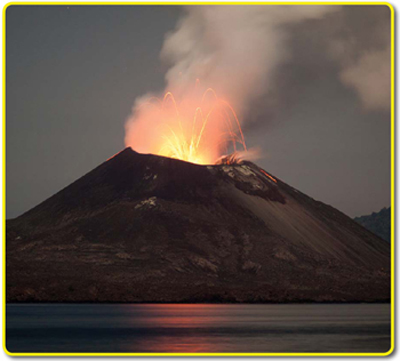
Shirley Duke

rourkeeducationalmedia.com | 
Scan for Related Titles
and Teacher Resources |
Before & After
Reading Activities | Level: T Word Count: 2,766 words 100th word: rock |
Before Reading:
Building Academic Vocabulary and Background Knowledge
Before reading a book, it is important to tap into what your child or students already know about the topic. This will help them develop their vocabulary, increase their reading comprehension, and make connections across the curriculum.
Look at the cover of the book. What will this book be about?
What do you already know about the topic?
Lets study the Table of Contents. What will you learn about in the books chapters?
4.What would you like to learn about this topic? Do you think you might learn about it from this book? Why or why not?
Use a reading journal to write about your knowledge of this topic. Record what you already know about the topic and what you hope to learn about the topic.
Read the book.
In your reading journal, record what you learned about the topic and your response to the book.
After reading the book complete the activities below.
Content Area Vocabulary
Read the list. What do these words mean?
basalt
caldera
convection
lahars
magma
molten
pyroclastic
rifts
subduction
tectonic
vents
volcanologist
After Reading:
Comprehension and Extension Activity
After reading the book, work on the following questions with your child or students in order to check their level of reading comprehension and content mastery.
Why do people live near volcanoes? (Summarize)
In what ways are earthquakes and tsunamis connected to volcanoes? (Infer)
Have you ever been to a volcano or near a volcano such as Yellowstone or in Hawaii? What was the land surrounding these volcanoes like? (Text to self connection)
Which do you think is more deadly: the volcano eruption or the aftermath of the eruption? Explain. (Asking questions)
Explain the differences between caldera and strato volcanoes. (Summarize)
Extension Activity
Yellowstone is considered a supervolcano. What are supervolcanoes? Where are they located? Research supervolcanoes and find out what makes them different from the volcanoes you read about. Create a poster, brochure, or other presentation explaining supervolcanoes and how to be prepared in case you encounter one!
WHAT IS A VOLCANO?
Volcanoes begin deep within the Earth. Hot, collects far underground. Forces below it crack the underground rock. Pressure pushes melted rock upward through these openings. The molten rock explodes from the opening or flows out.
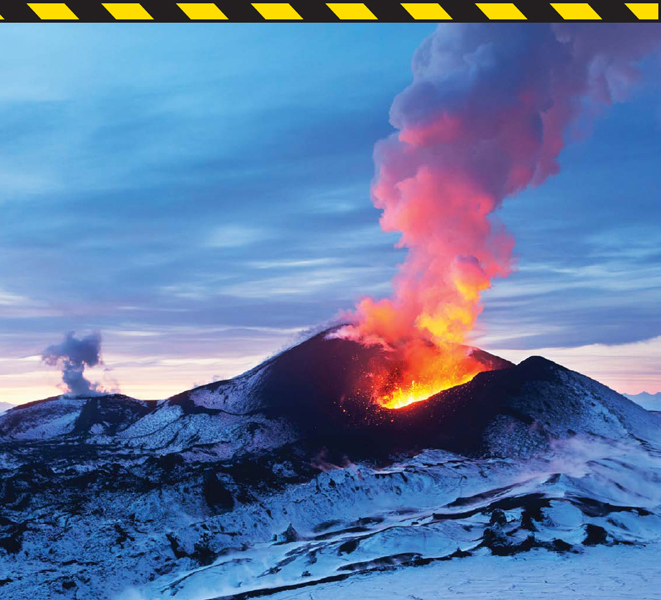
The molten rock is now lava. Once cooled, the lava solidifies and becomes igneous rock. Over time, a cone shape builds up.
Hot Fact
Igneous rock is one of three main types of rocks. The other types are sedimentary and metamorphic.

Magma chambers underground hold different amounts of magma. Cracks and allow the hot magma to move upward and collect in chambers in volcanoes. Certain conditions force the magma above ground, where it cools as lava.
Did You Know?
The word volcano came from the name of the Roman god Vulcan. People once thought the lava and gas clouds erupting from the island of Vulcano was Vulcan forging thunderbolts for Jupiter, king of their gods, and for Mars, their god of war.
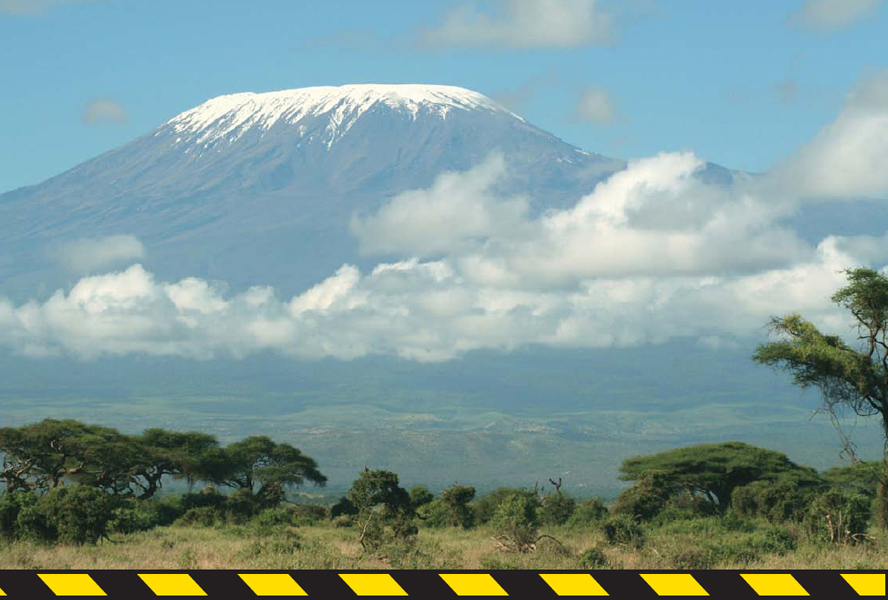
Mt. Kilimanjaro in Tanzania is a dormant volcano. It is the tallest mountain in Africa and is 19,341 feet (5,895 meters) tall.
Volcanoes that have produced lava or eruptions in the past 10,000 years, or since the Ice Age, are active volcanoes. Eruptions happen when molten rock, gases, and ash from below the Earths surface are forced up and out through cracks.
Hot Fact
Alaska contains three-fourths of the volcanoes that have erupted in the past 200 years.
Dormant volcanoes are active volcanoes that are not erupting, but are expected to erupt again. Extinct volcanoes have not erupted in at least 10,000 years and are not expected to erupt again. Still, some extinct volcanoes have surprised people and erupted in the past.
Types of Volcanoes
Volcanoes are often classified by shape and how they were formed. However, not every kind of eruption falls into a single group. The speed of the flowing lava builds the shape.
Slow-moving lava forms a gently sloping cone called shield volcanoes. They are not normally explosive. Shield volcanoes are most often , a type of lava that is very liquid and flows easily.

This view of Mauna Loa from Mauna Kea in the late evening shows the distinctive shape of shield volcanoes.
Mauna Loa, one of five volcanoes that form the island of Hawaii, is one of the largest active volcanoes today. The mountain it forms is 60 miles (97 kilometers) long and 30 miles (48 kilometers) wide. Mauna Loa is the Hawaiian term for long mountain. It is a shield volcano. Its eruptions have averaged one every six years for the past 300 years.
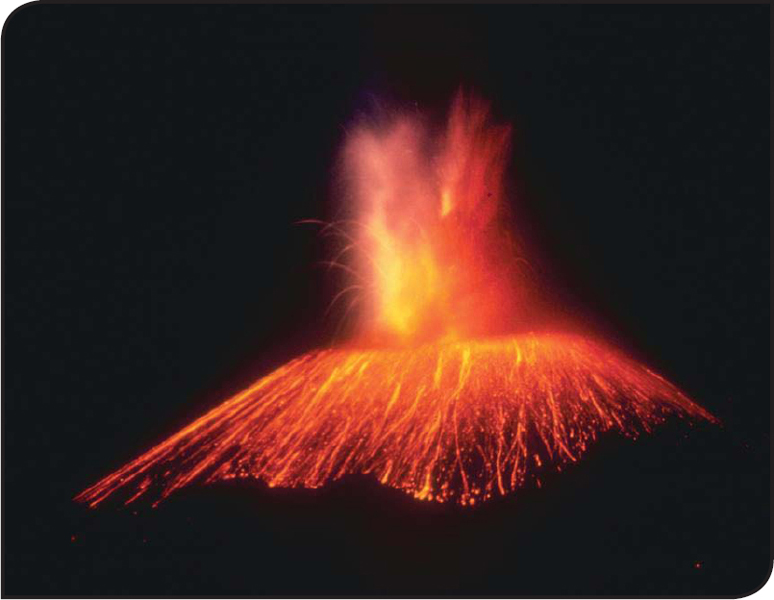
Cinder cones are the simplest type of volcanoes. Lava flows out of a central vent and down the sides, forming a cone.
The lava in a cinder cone volcano cools quickly. It builds up rock to form the typical steep-sided cone. The cinder cone can be part of another volcano system, such as one growing on a shield volcano. Paricutin in Mexico is a cinder cone volcano.
Strato volcanoes produce two types of lavas. These lavas are thicker and cooler than basalt. The thick lavas often plug the opening. Different gases build up below the plug. They make a more explosive eruption when they blow. The tall sides may trigger mud or landslides and earthquakes during an eruption.
The lava pours down the volcanos sides. Cooled layers of rock form the sides. Strato volcanoes are also called composite volcanoes. Over half of the worlds volcanoes are strato volcanoes. Mt. St. Helens, Mt. Rainier, and Mt. Fuji are strato volcanoes.
